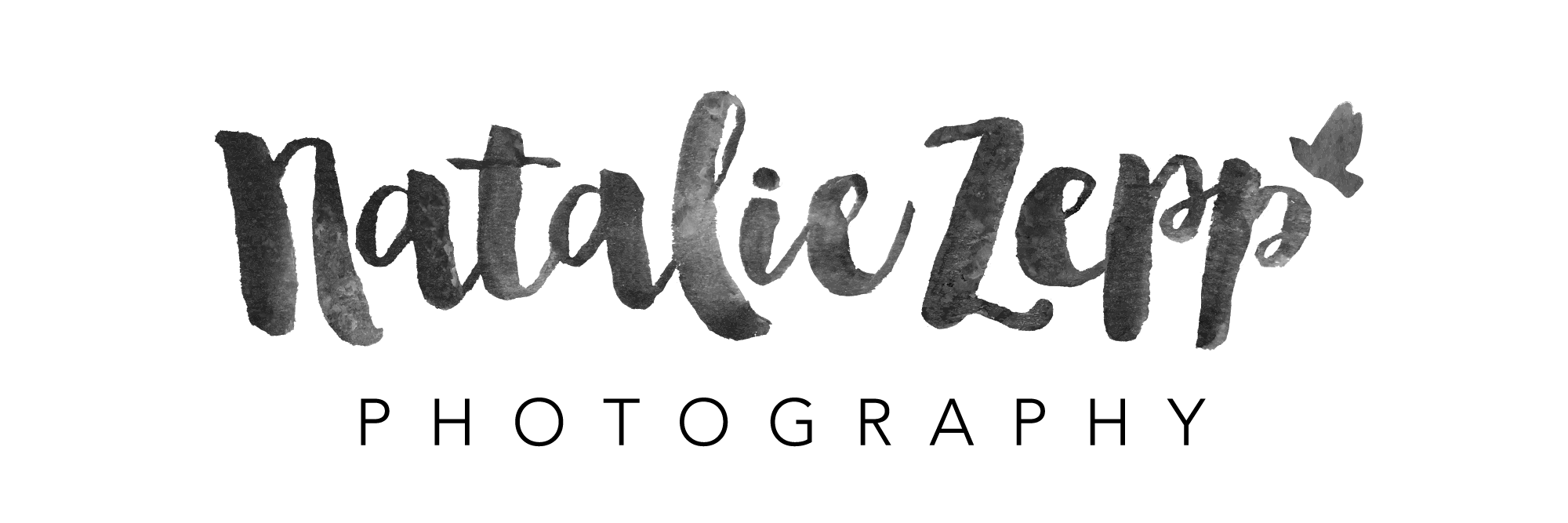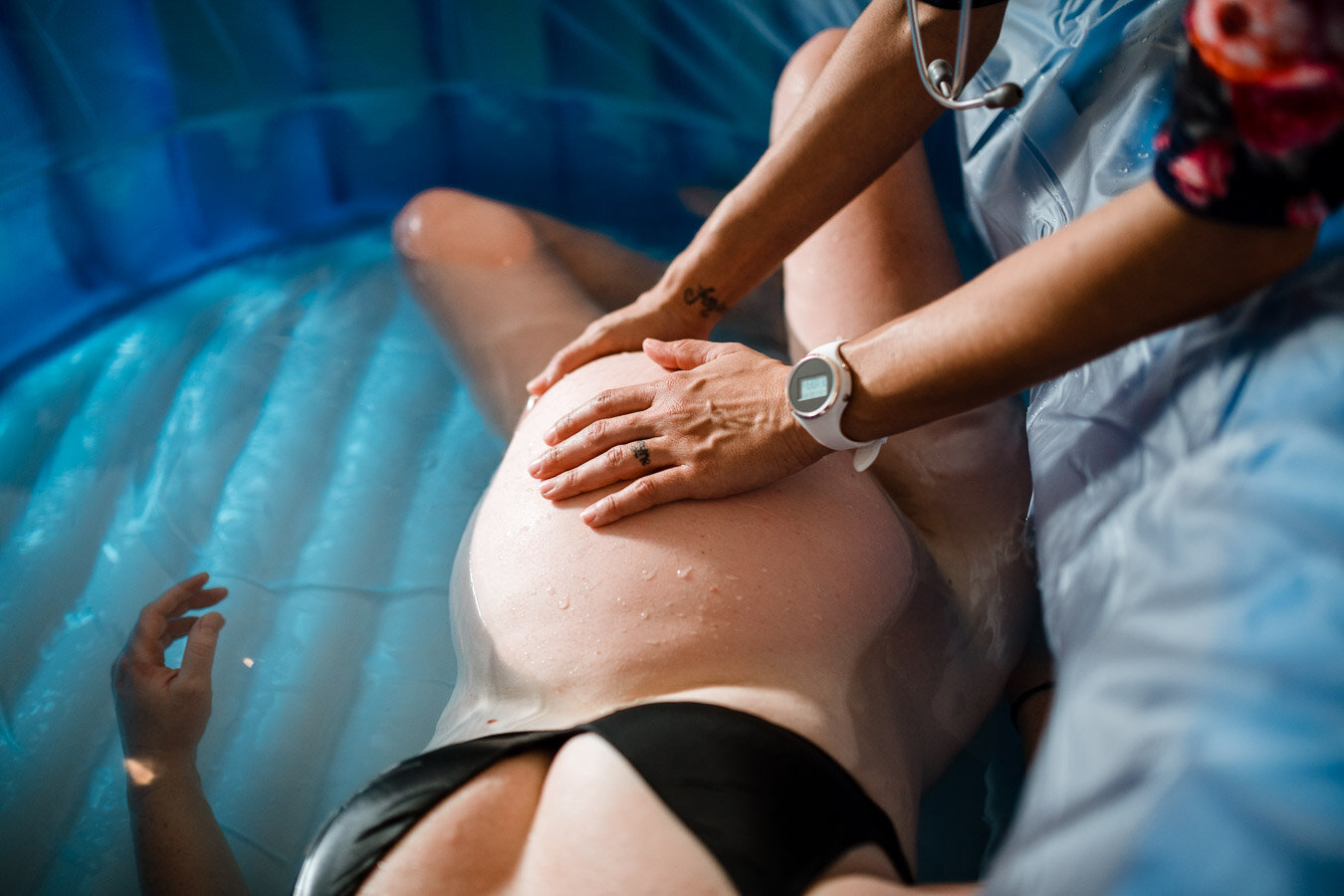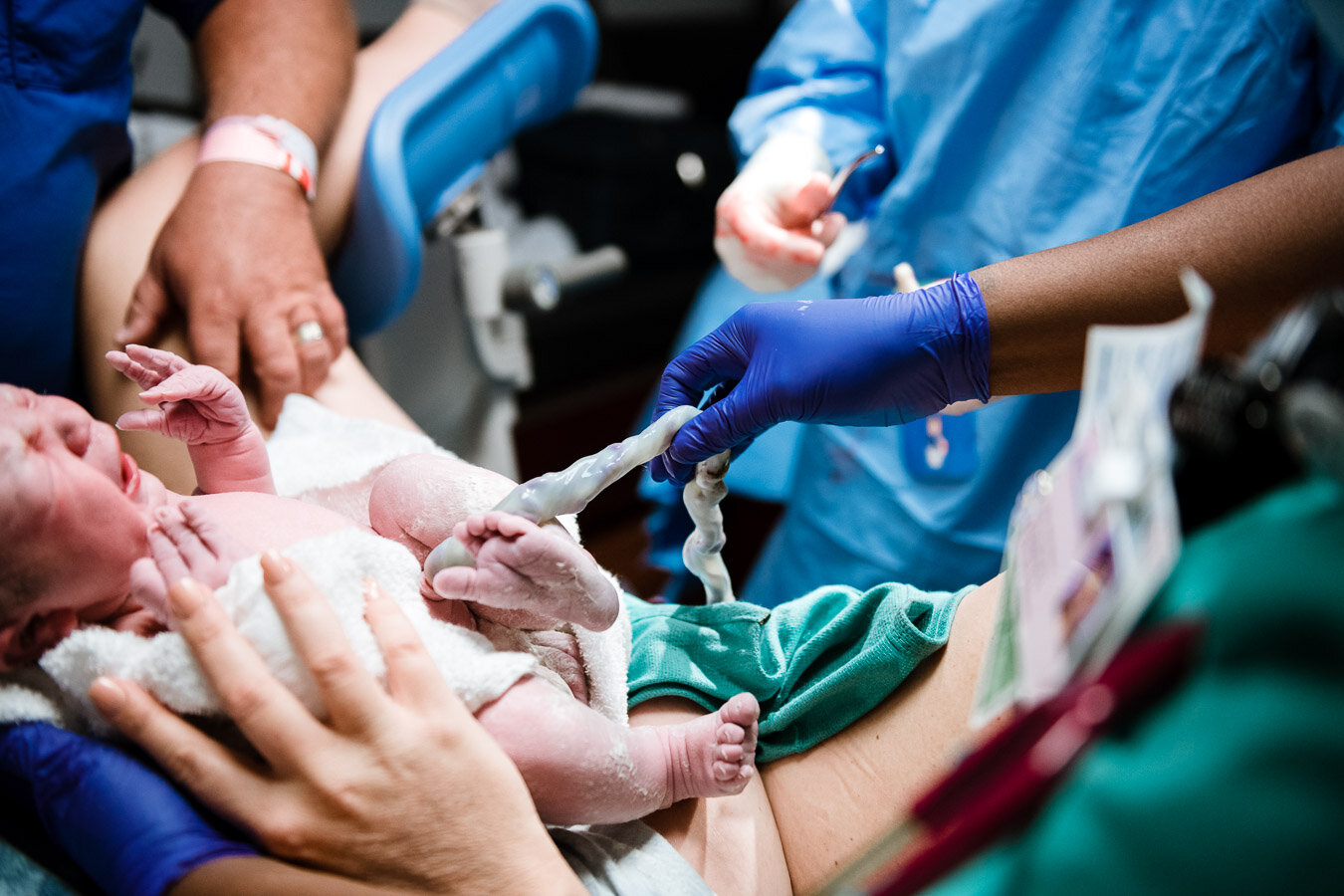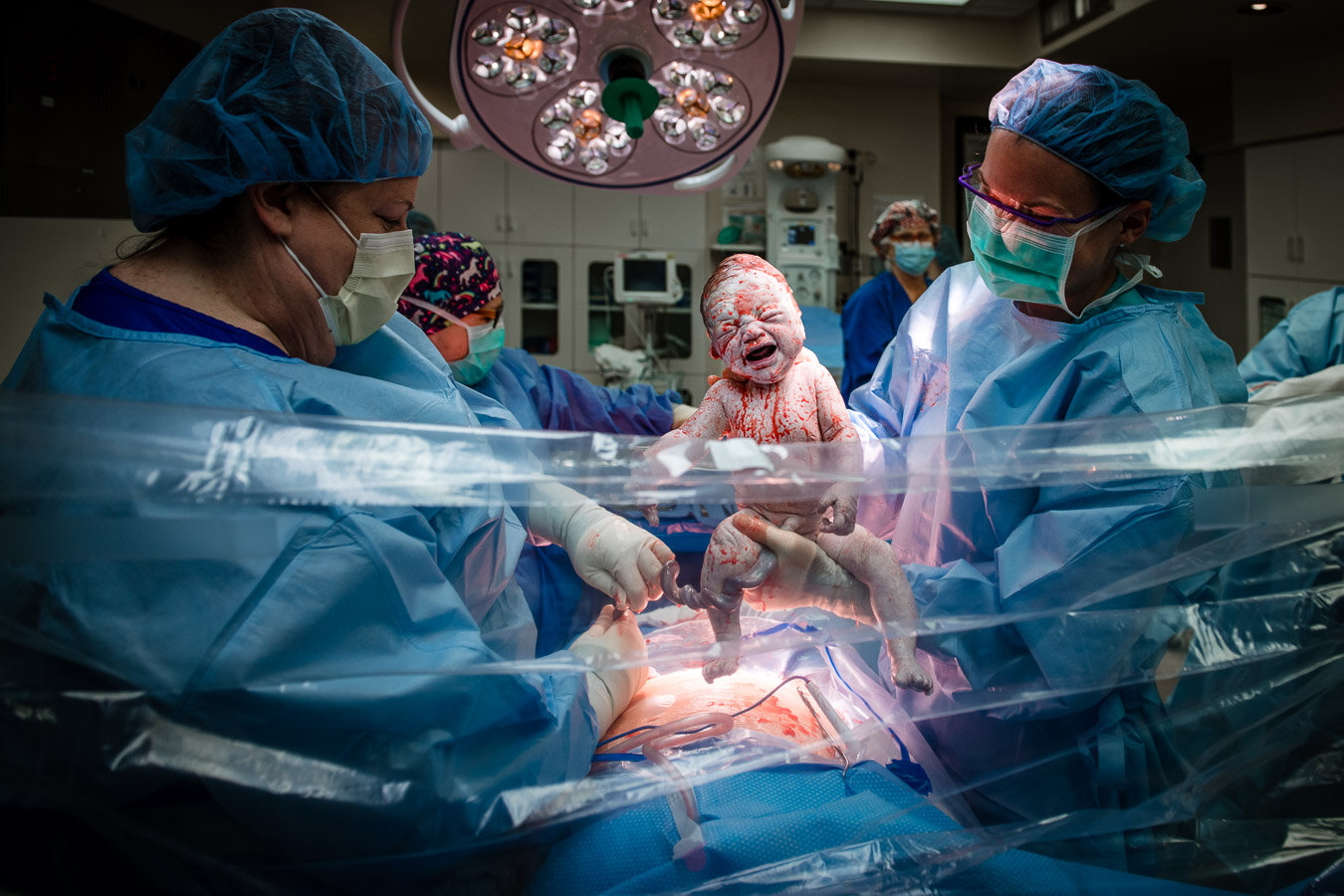So You Want to Photograph Your First Birth? Here’s What You Really Need to Know.
If you're a wedding or lifestyle photographer stepping into the world of birth photography, welcome. It’s powerful. It’s intimate. It’s unpredictable. And it's a whole different beast than anything else you’ve ever shot.
I get asked all the time what it takes to be prepared for that first birth, so here’s a full breakdown of what you need to know—from client prep to lighting to hospital policies and how to protect your time and energy.
Prepare Your Client (and Yourself)
Birth isn’t a styled shoot. It’s not a wedding with a timeline and a planner. It’s messy, emotional, slow, fast, or both. Your client might be pushing for hours, or stuck at 8 centimeters for twelve. Help them understand that you’re documenting the real and raw, not curating perfection. Manage their expectations. Make sure they know what they’ll get if labor stalls, if the lighting is rough, or if you can’t be in the OR during a cesarean or don’t make it at all.
Think through how you are going to handle being on-call for weeks, waking up in the middle of the night, getting stuck at the hospital for far longer than you anticipated and feeling too tired to drive home. How do you want the client to update you during labor and at what point do you want to join her?
Your contract should clearly lay out what you do and don’t guarantee. Define what "on-call" means. Are you available 24/7 from 38 to 42 weeks? What happens if you miss the birth due to illness or a family emergency? Make sure it’s all spelled out. You should also have liability insurance. This isn’t just protecting you—it’s setting up trust.
Understand What Being On-Call Actually Means
Being on-call is brutal if you're not prepared for it. You’re not just waiting for a text. You’re scheduling your life around someone else’s uterus. No out-of-town trips. No heavy drinking. Your phone needs to be on and near you at all times. You need backup childcare, who can handle anything that comes up if you are unavailable. You need backup photographers. You have to accept that you could be actively working for 30 straight hours, or come home with five usable frames if things move fast or you get there too late.
Compensate Yourself Fairly
If you aren’t charging wedding prices (or more!) for birth, you’re undercharging. Birth photography is not just about the hours you’re present. It’s about the emotional labor, the unpredictability, and the lifestyle cost of being on-call for weeks. It is physical discomfort and exhaustion when there is nowhere for you to sit or sleep.
Just like hiring a nanny, housekeeper, or a private chef, birth photography is a boutique, luxury service. You deserve to be compensated accordingly for your time and expenses, even if this is your first birth ever. If you’re here, you probably already have the technical skills you need to knock it out of the park.
The Gear You Actually Need
Don’t show up with beginner gear and no backup plan. Birth isn’t something you can redo because your SD card failed. (Or worse, your camera. Yes, I’ve had that happen!)
Bare minimum:
A full-frame camera body with dual card slot, set to backup in camera.
A 24-70mm f/2.8 lens (you’ll be glad for the flexibility and low light capabilities)
At least one extra battery and charger
Backup camera body if you’re offering professional services
You don’t need a bag full of primes or specialty glass. You need reliability and flexibility. Birth spaces are tight and unpredictable. You won’t have time to switch lenses while someone’s crowning and you will more than likely be stuck in one singular spot during the key moment, the actual delivery.
Personally, I keep two cameras, extra cards, and extra batteries on my person at all times. I like my 24-70mm f/2.8 on one body and either a 24mm f1.4 or 35mm f/1.4 on my second body. You won’t get a do-over or have time to run back to your bag in the moment your client most wants captured, so it is essential to always be prepared for the worst case scenario.
Technical Considerations: Low Light, Harsh Light, and Tricky Color
Birth rarely happens in ideal light. You’ll be working in dim spaces with tiny practicals, blown-out surgical lighting, and mixed color temps that can wreck your white balance. Your camera will struggle to focus in the dark, so make sure your client knows you need some light, use your center AF point, and switch to manual with focus peaking turned on if needed.
You must be comfortable shooting in manual mode and metering with the spot meter. When those surgical lights come on (they use them in vaginal birth too!), you will blow your highlights on the emerging baby if you leave any decisions about metering and exposure up to your camera. Err on the side of underexposing the moment of birth.
As far as editing goes, your usual preset or editing style is probably going to look awful on birth images. Getting clean skin tones and truly white whites is a huge feat, especially when one of your subjects has blotchy, just-born skin. Expect to spend time making a lot of individual color adjustments. If you can nail a crisp, true to life color image every time, well consider yourself a truly skilled birth photographer.
Hopefully it goes without saying that shooting RAW is non-negotiable.
Lighting the Birth Space: OCF is King
You have two main options: turn on all the lights and embrace it, or use off-camera flash carefully.
If you go with overhead lighting, know that it may be a mix of white balances and you will need to match your shutter speed to the refresh rate of the hospital lighting or you will get banding across your images. You’ll also have to contend with the birth team flipping off the lights all the time. Dim lighting is usually preferable during labor as it facilitates oxytocin production, so I try to use flash wherever I can. If you can’t, make sure you talk to your client and coach her to ask that all of the lighting in the room be left on at all times.
If you go with flash, you need to know exactly what you’re doing. Practice using it off-camera and in low-light settings before the birth. Bounce it if you can. Keep it discreet. Be extremely aware of how your setup impacts the space.
Your flash shouldn’t be in the midwife’s face or blocking the OB’s access to the table. You’re there to document, not disrupt. Be invisible and respectful. That means no softboxes even a light stand may be a no-go depending on the room size. You may be hard pressed to find a spot to put your flash. But if you really know what you are doing, you will be able to get creative.
Generally, nobody is bothered by or really even notices flash if you use it off camera and place it out of the way. I’ve never had anyone ask me to turn it off, but if you do, turn it off. Even if it means grainy photos. Roll with it. You’re a guest.
(Fun fact: In the hospital, your flash may trigger the touchless hand sanitizer or soap dispensers from time to time. That is something that will get noticed, so it’s nice to be able to reassure everyone there isn’t a poltergeist in the room.)
Know the Hospital and/or Provider’s Policies
This is a big one. You are not entitled to be in that birth room. You are there because the patient invited you, and you are subject to all visitor rules. Don’t argue with staff. Don’t try to sneak in during restricted hours. Ask permission before you touch anything. If there’s a C-section, most hospitals only allow one person in the OR—and it’s not going to be you. Don’t argue it. Prepare your client for that reality and have a plan B (recovery room photos, skin-to-skin, first latch, etc.).
In general, you (plus the client’s partner) will be allowed to attend your client for the durations of a vaginal birth experience. The anesthesiologist is the one in charge of cases that go to the OR. They run the show and whether or not they will allow you into the OR as a second support person is entirely up to the doctor or CRNA assigned to your case. There is no way to know in advance.
Locally for me, all of this holds pretty true, with the exception of Ascension Sacred Heart. As of the date of this post, they unequivocally will no longer allow a second support person into the OR. Even if your client can get a yes out of anesthesia, the nurses will shut it down. In fact, you will not even be permitted into OR recovery to document those just born moments. You will be relegated to the waiting room (usually for 2-3 hours) until your client has been moved to the postpartum wing. It’s been such a bummer for moms delivering here, so I make sure to mention it as early in the pregnancy as possible, just in case that information would be reason enough to choose a different hospital (which might mean switching doctors too).
Other things to consider, you technically aren’t supposed to photograph medical procedures outside of the actual delivery (though sometimes I’ve been given the ok to do so). You may be asked to stop photographing (or even leave the room) while an epidural is placed, in the event of an emergency, or if mom or baby needs special attention. Read the room. If providers or nurses seem tense, and asking whether or not you can keep shooting would pull focus from the patient, it is probably appropriate to stop and get out of the way.
Every hospital is different. Get to know the ones in your area. Ask your client to let her provider and day-of birth team that know you’ll be there, and to clarify any restrictions.
Respect the Birth Team
Stay out of the way. Stay quiet. Don’t direct anything. Your job is to document without interfering. That means being hyper-aware of how much space you’re taking up, how loud your shutter is, and how you’re moving through the room. Don’t block monitors. Don’t stand where a nurse needs to be. If someone says move, you move. Check your ego at the door and remain a friendly, accommodating, and offer to be helpful wherever you can.
There isn’t always an appropriate moment to speak to the birth team directly, but I always try to introduce myself to the patient’s primary care giver and make sure they know that my goal is to stay out of their way and I’m happy to be an extra set of hands where I can. Their job of caring for their patient takes priority over a picture. They can walk in front of me, shove me out of the way, ask me to hand them something, whatever.
It is also important to respect their privacy. Most of the time, birth professionals expect to be caught to be in photos and are ok, if not thrilled, with it. This is a happy event and they are usually proud to be a part of it. But I still try to find a moment to ask if they have any objections to being in pictures. If I can’t ask in advance, I attempt to avoid capturing their faces on camera unless an invitation is made clear via gesture (like they hold the baby up and pose for me).
Shooting birth is hard. It’s also some of the most fulfilling and meaningful work you’ll ever do. It will test your endurance, your emotional resilience, and your technical skills. But if you do it right, it’ll give you a front-row seat to the rawest, most beautiful moments of human life.
Just be ready. Prepare well. Respect the space. Charge your worth. And never forget that birth is not a show—it’s sacred.
If have additional questions or would be interested in one-on-one mentoring in birth photography or editing, I am available to help you!









